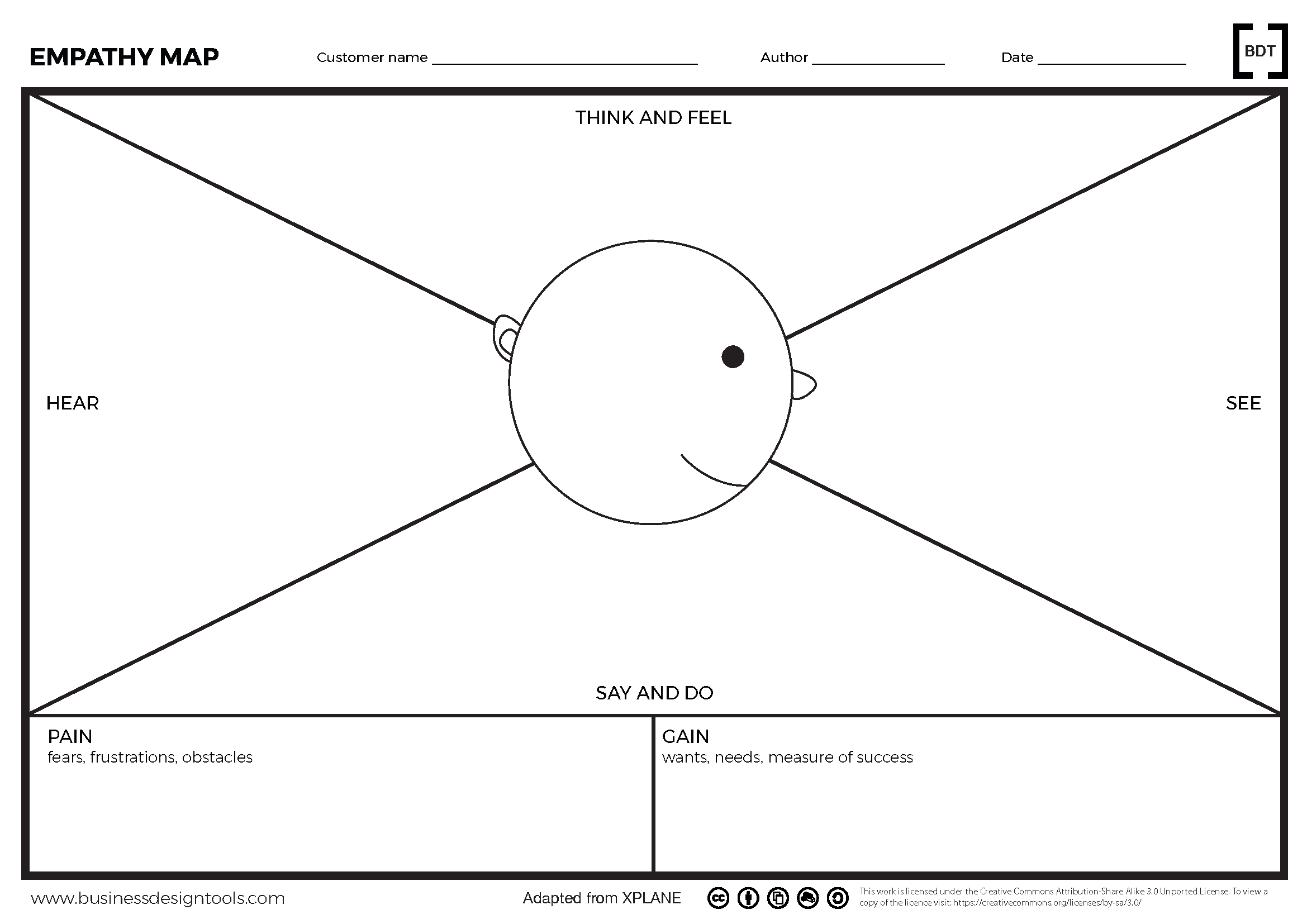Empathy Map
Get to know what motivates your user. The Empathy Map is a strategy tool that helps entrepreneurs gain a deep understanding of their target customers.
By utilizing this tool, businesses can develop products and services that truly resonate with their customers’ needs, desires, and pain points. The Empathy Map (developed by XPLANE) consists of four key quadrants that encourage entrepreneurs to step into their customers’ shoes and empathize with their experiences.
Key Customer Quadrants in the Empathy Map
- Think and Feel: This quadrant delves into the thoughts and emotions of customers, uncovering their motivations and aspirations. Understanding what customers think and feel is essential for creating products and services that resonate on an emotional level.
- Hear: Capturing the conversations and information that customers are exposed to provides valuable insights into their preferences and concerns. By understanding what customers hear from other people or from the brand, businesses can tailor their communication strategies effectively.
- See: By focusing on what customers see in their environment, businesses can understand the context in which their target customers operate. This includes identifying influencers, surroundings, and any visual cues that impact customer decisions.
- Say and Do: This combined quadrant involves collecting both verbal expressions and key statements made by customers, as well as observing their actions and behaviors. By listening to what customers say and watching what they do, businesses can identify their explicit needs, preferences, challenges, pain points, and opportunities for improvement.
Customer Pains and Gains in the Empathy Map
- Pain: The pain area of the canvas represents the challenges, frustrations, and obstacles faced by the target customer. By addressing these pain points, businesses can create solutions that alleviate customer struggles and enhance satisfaction.
- Gain: The gain area highlights the benefits, aspirations, and goals of the target customer. By focusing on the gains desired by customers, businesses can develop products and services that fulfill customer expectations and deliver value.
Why This Tool is Important
- Customer-Centric Approach: The Empathy Map encourages businesses to adopt a customer-centric approach, leading to the creation of products and services that truly address customer needs, fostering higher satisfaction and loyalty.
- Informed Decision Making: Utilizing the Empathy Map enables entrepreneurs to make informed decisions based on a deep understanding of their customers. This aids in prioritizing features, crafting effective marketing strategies, and optimizing resource allocation.
- Creating Differentiation: By understanding customers at a profound level, businesses can differentiate themselves from competitors. Insights gained through the Empathy Map empower entrepreneurs to develop innovative solutions that stand out in the market.
References
- Brown, T. (2008). Design thinking. Harvard Business Review, 86(6), 84-92.
- Patnaik, D. (2009). Wired to care: How companies prosper when they create widespread empathy. FT Press.
- Mootee, I. (2013). Design thinking for strategic innovation: What they can’t teach you at business or design school. Wiley.
Please note that the above references provide additional information on design thinking and empathy-based approaches in business strategy but may not specifically mention the Empathy Map canvas.
